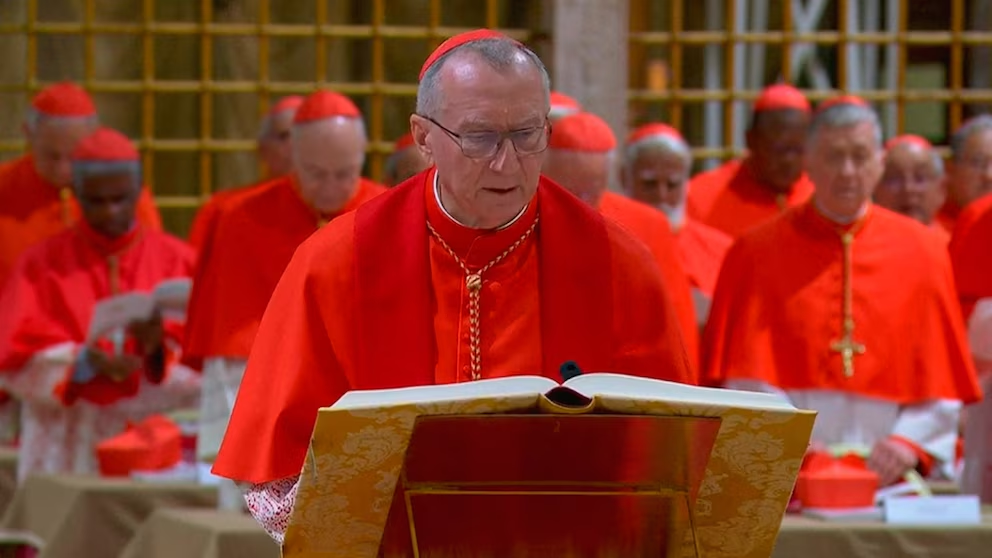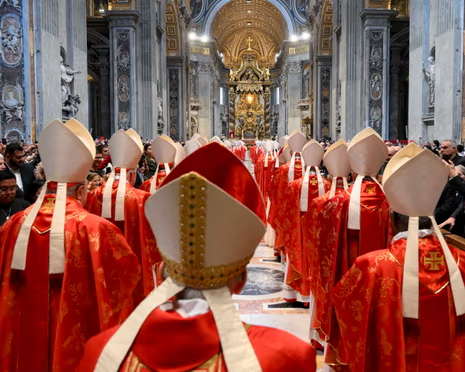In a moment steeped in tradition and spiritual significance, 133 cardinal electors from around the globe gathered in the Vatican on Wednesday to begin the sacred and secretive process of selecting the 267th pope of the Roman Catholic Church.
The conclave follows the death of Pope Francis last month, ending a 12-year papacy marked by bold reform and global outreach.
Dressed in their red robes, the cardinals first assembled in St. Peter’s Basilica for a solemn final mass led by Cardinal Giovanni Battista Re, the dean of the College of Cardinals. Although too old to vote himself, Re offered a stirring homily urging his fellow prelates to seek divine guidance.
“We are here to invoke the help of the Holy Spirit, to implore his light and strength so that the pope elected may be he whom the Church and humanity need at this difficult and complex turning point in history,” he said. Emphasizing unity, he reminded them that communion within diversity is essential for the Church’s global mission.
READ ALSO: Houthi Leader Vows Continued Strikes in Support of Gaza, Warns Israel Despite U.S. Ceasefire
From there, the cardinals moved to the 15th-century Sistine Chapel—just steps away—where the doors were closed behind them after the traditional call of “Extra omnes” (“Everyone out”).

Sealed off from the outside world and having surrendered all communication devices, the cardinals swore an oath of secrecy before casting their first ballots under the gaze of Michelangelo’s Last Judgment.
READ ALSO: China Slashes Interest Rates and Eases Lending Rules to Revive Sluggish Economy
With no definitive frontrunner to succeed Pope Francis, the conclave is wide open. The electors represent about 70 countries, many of them unfamiliar with one another before arriving in Rome. While some support a candidate who can carry forward Francis’s legacy of inclusivity and outreach, others are calling for a return to a more traditional, doctrinal approach.

Names circulating include Italian Cardinal Pietro Parolin, Francis’s former secretary of state and a seasoned Vatican diplomat; Pierbattista Pizzaballa, the Latin Patriarch of Jerusalem; Hungary’s Peter Erdo; and Malcolm Ranjith of Sri Lanka. The winner must secure a two-thirds majority—at least 89 votes—to become the next pontiff.
The task ahead is monumental. The next pope will be tasked with addressing the Church’s most urgent challenges: declining priest numbers, the role of women in the Church, balancing tradition with modernization, and cleaning up the Vatican’s troubled finances.

The long shadow of the clerical abuse crisis also remains, along with the Church’s geopolitical role in fractured world. Cardinal Re captured the gravity of the decision: “This is a choice of exceptional importance, one that calls for setting aside every personal consideration.”
Outside the Vatican walls, voices of protest added another layer to the day’s solemnity. Women’s rights groups gathered in Rome to highlight their exclusion from the conclave process. “You cannot go into a locked room and discuss the future of the Church without half of the Church,” said Miriam Duignan of the UK-based Wijngaards Institute for Catholic Research.

Despite representing 50% of the Catholic faithful, women have no role in the conclave, a point that continues to ignite passionate debate within and outside the Church.
As tradition dictates, ballots will be burned after each round of voting. Black smoke from the chapel’s chimney signals no decision has been made; white smoke announces the election of a new pope. The first round typically involves just one vote and is often inconclusive.
Both Pope Francis and his predecessor, Benedict XVI, were elected within two days of the conclave’s start, but the process can take much longer—history’s lengthiest conclave lasted nearly three years.
As the cardinals cast their first votes under Michelangelo’s iconic ceiling, thousands of pilgrims and onlookers filled St. Peter’s Square, eyes fixed on the chimney, waiting for a sign that a new spiritual leader has emerged.
Discover more from Scoop Hub
Subscribe to get the latest posts sent to your email.

